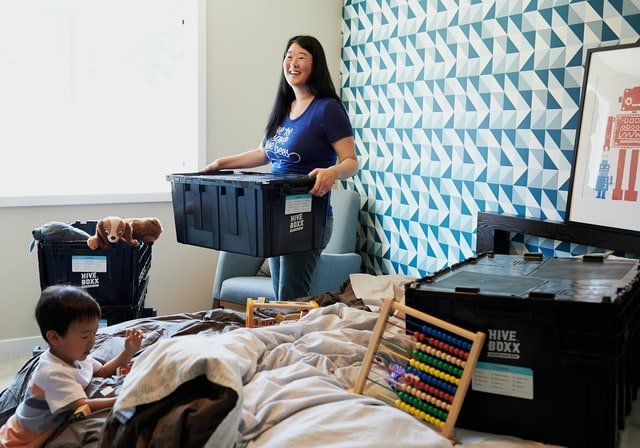Four easy tips for packing fragile items

Four easy tips for packing fragile items
Since I moved home and broke out a beautiful antique wash basin, I’ve become a patient person – when it comes to moving! It’s been a beautiful Delft Blue sink that’s been in my family for years and I eventually got tired of looking at that sad, sticky gray scar running the length of that gorgeous porcelain, and had to throw the piece off. Preventing these moving tragedies is really just a matter of proper preparation and having the right tools.
Here are our easy tips for packing and keeping your fragile items safely:
1. Prepare in advance. The process of filling crystal, porcelain, and other fragile materials takes some time. This is not the place to rush. If you don’t rent carriers, start early in the moving day and take the time to properly pack these items and decide if they go in the moving truck or by car.
2. You have the right tools. And here’s what you need: high-quality moving boxes of various sizes; Wrapping paper, bubble wrap paper, flexible cardboard, scissors, and wrapping tape. A large table for placing and packing your things is also an essential tool. For larger items, you may need an extra hand.
3. Label it! Having boxes that clearly contain your delicate items as “fragile” will help your operators handle them more carefully, as well as helping with unpacking and organizing in your new location.
4. Know what items will be packed and how to properly package them. Both your flat-screen TV and your grandmother’s cabinets are fragile items, but they are very different when it comes to packaging. Do your research on the best way to pack each item, and plan ahead so you don’t get stuck in bubbles on commute day.
How to pack the most common fragile items:
Panels – Panels should be packed vertically in small to medium sized boxes lined with creased packing paper from the bottom and top. Wrap each plate in bubble wrap and secure with masking tape. Place the paper between the two boards. Do not cover the box. You Move Me has dish packs available for purchase, whether you rent our packing service or do it yourself.
Glasses – Wrap the cups individually in cling film and place crinkle paper inside the larger pieces to reduce empty space. Line small or medium boxes with generous wrapping paper, top and bottom. Layer the blanks around the cups with paper as well, reducing as much as possible the chance of items moving around inside the box. Place the heaviest items at the bottom of the box, with the lightest pieces on top.
Lamps – Lampshades (flat side down) should be packed separately with plenty of papers. Bases can be placed in a large box if needed and bubble wrap used when appropriate.
Pictures/Frames – Picture frames should be placed in small to medium paper-lined boxes, standing if larger than 8 inches, with crumpled paper between each piece. Wrap tires in wrapping paper. Top frames with more wrapping paper to ensure items in the box don’t move around. When transporting paintings and photos larger than 3 feet, they must be secured with a moving blanket, plastic-wrapped, and transported separately.
Televisions Flat screen televisions can be difficult to pack. Begin by removing any cables and accessories (such as the legs of the stand), and be sure to put them in a box that is clearly labeled. Wrap the screen in a soft, moving blanket, and secure it all over the device with packing tape. Finally, place it inside the box, and seal it with masking tape. Make sure the box is the correct size for your TV.
Specialty Items – This is how I should have packed my family’s antique wash basin, and this can be applied to all large, brittle, oddly shaped items. It’s important to consider the shape and size of the piece, as well as any knobs or protruding pieces that can easily break. Wrap the entire piece in bubble wrap, securing it with masking tape. Lay it out on one piece of flexible cardboard. Lay an identical piece of cardboard over the item. Then bend the ends of the cardboard to meet and secure with masking tape.
Don’t be shy about tape. Wrap the entire piece with masking tape if necessary. You want the fragile item to be warm and stable. Then place the piece in a paper-lined box about the same size as the object, with the creased paper in any gaps. Finally, tape the box tight and mark with a darker marker: brittle.
Many people use old towels, small blankets, newsprint, or even paper towels to wrap fragile items. These are not wise choices. Newsprint can be dirty and that means you have more laundry to do in your new home. Paper towels are not strong or reliable. Old towels slip off easily and cannot be secured with duct tape, which is essential for proper packing of valuables. Please invest in the right tools and you won’t feel sorry.
Finally, be sure to tell your mover which boxes contain fragile items. Most carriers carry boxes meant for fragile items, such as dish packages and mirror frame packages.
Happy transition!



